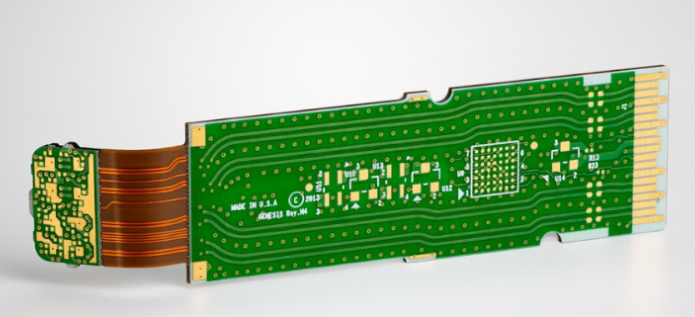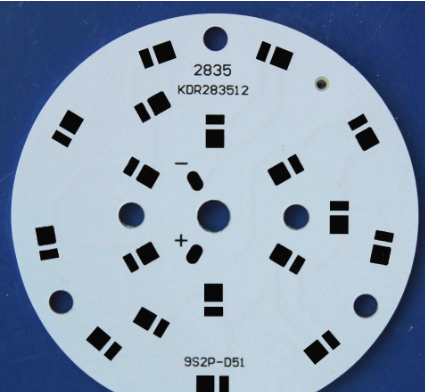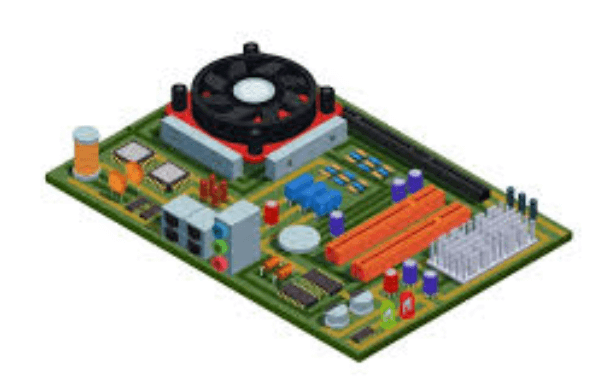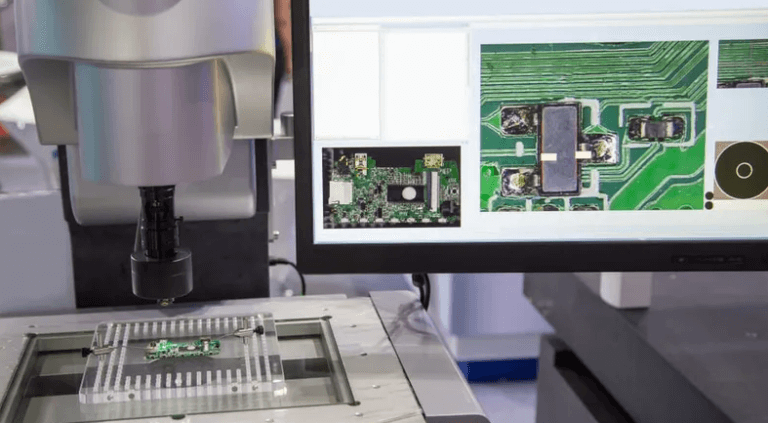Aluminum pcb material
Advantages Of Using Aluminum PCB Material In Electronics
Aluminum PCB material has become increasingly popular in the electronics industry due to its numerous advantages over traditional materials.
One of the primary benefits of using aluminum in printed circuit boards (PCBs) is its excellent thermal conductivity.
This property is particularly crucial in high-power applications where efficient heat dissipation is essential to maintain the performance and longevity of electronic components. By effectively transferring heat away from critical components, aluminum PCBs help prevent overheating and potential damage, thereby enhancing the reliability and lifespan of electronic devices.
In addition to superior thermal management, aluminum PCBs offer enhanced mechanical stability.
The inherent strength and durability of aluminum make it an ideal choice for applications that require robust and resilient materials. This is especially important in environments subject to mechanical stress or vibration, such as automotive, aerospace, and industrial applications.
The rigidity of aluminum PCBs ensures that they can withstand harsh conditions without compromising the integrity of the electronic circuits they support.
Moreover, aluminum PCBs are known for their lightweight nature, which is a significant advantage in the design and manufacturing of portable electronic devices.
The reduced weight of aluminum compared to other materials, such as copper, contributes to the overall weight reduction of the final product. This is particularly beneficial in applications where minimizing weight is critical, such as in consumer electronics, mobile devices, and wearable technology.
The use of aluminum PCBs can lead to more compact and lightweight designs, enhancing the portability and user experience of these devices.
Another notable advantage of aluminum PCB material is its environmental friendliness.
Aluminum is a recyclable material, which means that PCBs made from aluminum can be recycled and reused, reducing the environmental impact associated with electronic waste. This aligns with the growing emphasis on sustainability and eco-friendly practices within the electronics industry.
By choosing aluminum PCBs, manufacturers can contribute to a more sustainable future while also benefiting from the material’s superior performance characteristics.
Furthermore, aluminum PCBs offer cost-effective solutions for various electronic applications.
The manufacturing process for aluminum PCBs is relatively straightforward and can be more economical compared to other materials. The combination of cost efficiency, excellent thermal management, and mechanical stability makes aluminum PCBs an attractive option for a wide range of applications, from consumer electronics to industrial equipment.
In addition to these advantages, aluminum PCBs also provide improved electrical performance.
The material’s ability to conduct electricity efficiently ensures that electronic signals are transmitted with minimal loss or interference. This is particularly important in high-frequency applications where signal integrity is paramount.
The use of aluminum PCBs can result in better overall performance and reliability of electronic devices, making them a preferred choice for many engineers and designers.
In conclusion, the advantages of using aluminum PCB material in electronics are manifold. Its excellent thermal conductivity, mechanical stability, lightweight nature, environmental friendliness, cost-effectiveness, and improved electrical performance make it a superior choice for a wide range of applications. As the demand for high-performance and reliable electronic devices continues to grow, the adoption of aluminum PCBs is likely to increase, further solidifying their position as a key material in the electronics industry.
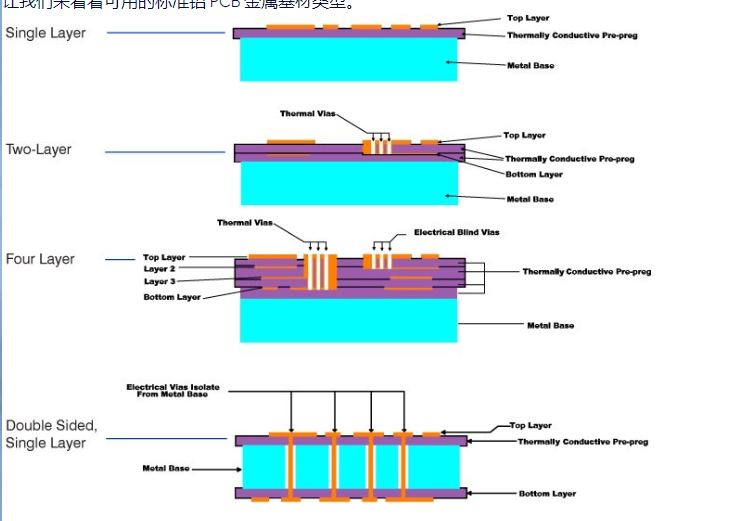
Thermal Management Benefits Of Aluminum PCBs
Aluminum PCBs, or aluminum-based printed circuit boards, have garnered significant attention in the electronics industry due to their superior thermal management capabilities.
These PCBs are constructed with a metal base, typically aluminum, which serves as a heat sink to dissipate heat away from critical components. This characteristic is particularly advantageous in high-power applications where efficient heat dissipation is crucial to maintaining performance and reliability.
One of the primary benefits of aluminum PCBs is their ability to manage thermal conductivity effectively.
Traditional PCBs, often made from materials like FR4, can struggle with heat dissipation, leading to potential overheating and failure of electronic components. In contrast, aluminum PCBs leverage the metal’s high thermal conductivity to transfer heat away from the components more efficiently. This results in lower operating temperatures, which can significantly extend the lifespan of the electronic devices.
Moreover, the enhanced thermal management provided by aluminum PCBs contributes to improved performance.
Electronic components, such as LEDs and power transistors, are highly sensitive to temperature fluctuations. Excessive heat can degrade their performance and, in some cases, cause irreversible damage. By utilizing aluminum PCBs, manufacturers can ensure that these components operate within their optimal temperature range, thereby enhancing their efficiency and reliability.
In addition to performance benefits, aluminum PCBs also offer design flexibility.
The metal base allows for the creation of thinner and more compact designs without compromising on thermal management. This is particularly beneficial in applications where space is at a premium, such as in LED lighting systems, automotive electronics, and consumer electronics. The ability to design smaller and more efficient circuits can lead to cost savings in both manufacturing and material usage.
Furthermore, aluminum PCBs are known for their durability and mechanical stability.
The metal base provides a robust foundation that can withstand mechanical stress and environmental factors better than traditional PCB materials. This makes aluminum PCBs an ideal choice for applications that require high reliability and longevity, such as industrial machinery and outdoor electronic systems.
Another noteworthy advantage of aluminum PCBs is their environmental friendliness.
Aluminum is a recyclable material, and the use of aluminum PCBs can contribute to more sustainable manufacturing practices. As the electronics industry continues to prioritize eco-friendly solutions, the adoption of aluminum PCBs aligns with the growing emphasis on reducing environmental impact.
It is also important to consider the cost implications of using aluminum PCBs.
While they may be more expensive than traditional FR4 PCBs, the long-term benefits often outweigh the initial investment. The improved thermal management can lead to reduced cooling requirements, lower energy consumption, and fewer instances of component failure. These factors can result in significant cost savings over the lifespan of the electronic device.
In conclusion, the thermal management benefits of aluminum PCBs make them a compelling choice for a wide range of applications. Their ability to efficiently dissipate heat, enhance performance, offer design flexibility, and provide durability positions them as a superior alternative to traditional PCB materials. As the demand for high-performance and reliable electronic devices continues to grow, the adoption of aluminum PCBs is likely to increase, driven by their numerous advantages and alignment with sustainable manufacturing practices.
Comparing Aluminum PCBs To Traditional FR4 Boards
Aluminum PCBs, or aluminum-based printed circuit boards, have gained significant attention in recent years due to their unique properties and advantages over traditional FR4 boards. To understand the differences and benefits, it is essential to compare these two types of PCBs in terms of thermal management, mechanical properties, and application suitability.
One of the most notable distinctions between aluminum PCBs and FR4 boards lies in their thermal management capabilities.
Aluminum PCBs are renowned for their superior heat dissipation, which is primarily attributed to the metal core that effectively conducts heat away from critical components. This characteristic is particularly advantageous in high-power applications where excessive heat can lead to component failure or reduced performance.
In contrast, FR4 boards, which are made from woven fiberglass cloth with an epoxy resin binder, have relatively poor thermal conductivity. Consequently, FR4 boards may require additional cooling mechanisms, such as heat sinks or fans, to manage heat, thereby increasing the complexity and cost of the overall design.
Transitioning to mechanical properties, aluminum PCBs exhibit greater durability and robustness compared to their FR4 counterparts.
The metal core provides a solid foundation that enhances the board’s structural integrity, making it less prone to warping or damage under mechanical stress. This robustness is particularly beneficial in applications subjected to harsh environmental conditions or mechanical vibrations.
On the other hand, FR4 boards, while offering adequate mechanical strength for many applications, are more susceptible to damage from bending or impact. This difference in mechanical properties can influence the choice of PCB material based on the specific requirements of the application.
Furthermore, the choice between aluminum PCBs and FR4 boards can also be influenced by their respective application suitability. Aluminum PCBs are often favored in industries where efficient thermal management is critical, such as LED lighting, power electronics, and automotive applications.
The ability to maintain lower operating temperatures not only enhances the reliability and lifespan of components but also allows for higher power densities and more compact designs.
Conversely, FR4 boards are widely used in a broad range of applications due to their versatility, cost-effectiveness, and ease of manufacturing. They are commonly found in consumer electronics, telecommunications, and computer hardware, where thermal management is less of a concern.
In addition to these primary considerations, it is also important to acknowledge the cost implications associated with each type of PCB. Aluminum PCBs tend to be more expensive than FR4 boards due to the higher cost of raw materials and the more complex manufacturing processes involved.
However, the potential for improved performance and reliability in demanding applications can justify the additional expense. Conversely, FR4 boards offer a more economical solution for applications where thermal management and mechanical robustness are not as critical.
In conclusion, the decision to use aluminum PCBs or traditional FR4 boards hinges on a careful evaluation of thermal management needs, mechanical property requirements, application suitability, and cost considerations. Aluminum PCBs provide superior heat dissipation and mechanical strength, making them ideal for high-power and harsh environment applications. Meanwhile, FR4 boards offer versatility and cost-effectiveness for a wide range of general-purpose applications. By understanding the distinct advantages and limitations of each material, designers can make informed choices that optimize performance, reliability, and cost-efficiency in their specific applications.

Applications Of Aluminum PCBs In LED Lighting Systems
Aluminum PCBs, or aluminum-based printed circuit boards, have become increasingly prevalent in various industries due to their superior thermal management capabilities and mechanical stability. One of the most significant applications of aluminum PCBs is in LED lighting systems, where their unique properties offer numerous advantages over traditional materials.
As LED technology continues to evolve, the demand for efficient and reliable thermal management solutions has grown, making aluminum PCBs an ideal choice for these applications.
To begin with, the primary advantage of aluminum PCBs in LED lighting systems is their exceptional thermal conductivity.
LEDs generate a considerable amount of heat during operation, which, if not properly managed, can lead to reduced performance, shorter lifespan, and even failure of the LED components.
Aluminum PCBs effectively dissipate heat away from the LEDs, ensuring that the temperature remains within optimal operating ranges.
This thermal management capability not only enhances the performance and longevity of the LEDs but also contributes to the overall reliability of the lighting system.
Moreover, aluminum PCBs offer excellent mechanical stability, which is crucial for the durability and robustness of LED lighting systems.
The aluminum substrate provides a solid foundation that can withstand mechanical stress and environmental factors, such as vibrations and temperature fluctuations. This stability is particularly important in applications where the lighting systems are exposed to harsh conditions, such as outdoor lighting, automotive lighting, and industrial lighting. By using aluminum PCBs, manufacturers can ensure that their LED lighting systems maintain consistent performance and reliability over time.
In addition to thermal management and mechanical stability, aluminum PCBs also contribute to the miniaturization of LED lighting systems.
The compact design of aluminum PCBs allows for the integration of more components within a smaller footprint, enabling the development of sleek and efficient lighting solutions. This is particularly beneficial in applications where space is limited, such as in consumer electronics, medical devices, and architectural lighting. The ability to create smaller and more efficient lighting systems without compromising on performance is a significant advantage that aluminum PCBs offer.
Furthermore, the use of aluminum PCBs in LED lighting systems can lead to cost savings in both manufacturing and operation.
The efficient thermal management provided by aluminum PCBs reduces the need for additional cooling mechanisms, such as heat sinks and fans, which can add to the overall cost and complexity of the lighting system.
Additionally, the enhanced performance and longevity of LEDs result in lower maintenance and replacement costs over time.
These cost savings make aluminum PCBs an attractive option for manufacturers and end-users alike.
Another noteworthy aspect of aluminum PCBs in LED lighting systems is their environmental impact. Aluminum is a recyclable material, and the use of aluminum PCBs aligns with the growing emphasis on sustainability and eco-friendly practices in the electronics industry. By choosing aluminum PCBs, manufacturers can contribute to reducing electronic waste and promoting a more sustainable approach to product development.
In conclusion, the applications of aluminum PCBs in LED lighting systems are vast and varied, offering numerous benefits that enhance the performance, reliability, and efficiency of these systems. The superior thermal management, mechanical stability, compact design, cost savings, and environmental advantages of aluminum PCBs make them an ideal choice for a wide range of LED lighting applications. As the demand for advanced lighting solutions continues to grow, the role of aluminum PCBs in meeting these needs will undoubtedly become even more significant.

